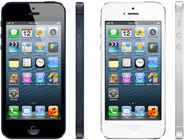Apple has finally delivered on one of the longest running rumor in smartphone history – LTE. They dipped their toe into the 4G waters with the new iPad announcement last year but that was only with Verizon and AT&T and that didn’t include the hundreds of millions of devices in our pockets everyday. Given the hot marketing speak of 4G LTE these days, one might think that LTE is the new 3G. Not so.
According to IDC, only three countries have significant numbers of LTE customers: the United States, South Korea and Japan with Verizon being the largest LTE network in the world and the highest number of LTE subscribers, around nine million at the end of the first quarter. If you add up the top 3, you only get roughly 14 million worldwide LTE subscribers. That’s a paltry number compared to the hundreds of millions of 3G subscribers. That and the fact that LTE chipsets are still a major battery drain on our mobile devices help to fully explain why Apple has waited this long to fully jump into the LTE game.
It took competitors a few years but they have finally surpassed Apple by hundreds of millions of physical devices worldwide and yet Apple’s iOS and Google’s Android OS devices are neck and neck when it comes to data consumption. Carriers know this all too well so Apple committing to a worldwide LTE standard (7 bands, 3 major carriers, 2 standards (CDMA & GSM)) for AT&T, Verizon and Sprint sends a clear signal that we have officially entered true 4G buildout and optimization territory.
Now more than ever we see need for tools that simulate LTE base stations like Tortoise™ and tools that analyze LTE networks like YellowFin-LTE™.
- Stalking threats still very real for TV actress - 10/16/2024
- CrowdStuck thanks to CrowdStrike - 07/25/2024
- AT&T breach too big to ignore - 07/14/2024


Leave a Reply
You must be logged in to post a comment.